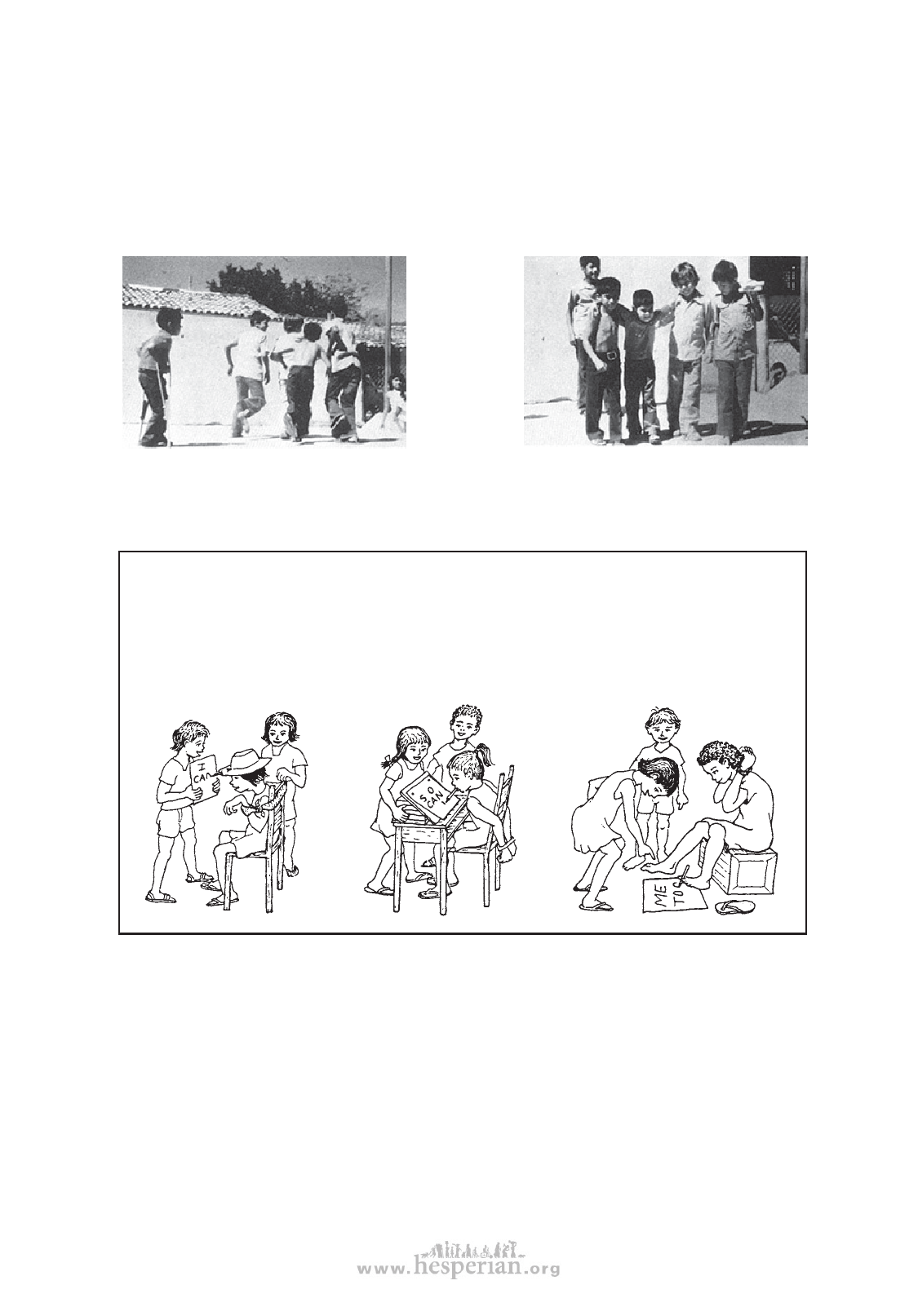
Role playing and children’s theater
CHILD-to-child 433
To help see how much it matters to include a disabled child in their fun, a group of
children can act out different possibilities. For example, they might act out (or do a ‘role
play’ of) the pictures at the bottom of the page before this one. After the role play the
group can discuss which of the two alternatives made the disabled child, and the other
children, feel better, and why.
Photos from Ajoya, Mexico
Or they can act out a situation in which they try to solve a particular difficulty,
obstacle, or challenge.
For example, there is a bright little girl who has no control of her arms or hands, but fairly
good movement of her head and one foot. Can the children figure out a way to help her
write? The class divides into 3 or 4 groups to try to solve the problem.
One group might think
of helping her to
write with her head.
Another, with
her mouth.
And another,
with her foot.
In these ways the children will begin to use their imaginations to help solve problems.
If some of the children’s role plays turn out especially well, or do an extra good job
at demonstrating important points, perhaps they can be developed further. Then the
children can present them, in the form of skits or children’s theater, to other classes,
parent groups, in the health center, or perhaps to the whole village.
(Examples of two skits which schoolchildren, together with health workers and
disabled rehabilitation workers, put on in the village of Ajoya, Mexico, are on pages
456 to 461.)
disabled village children